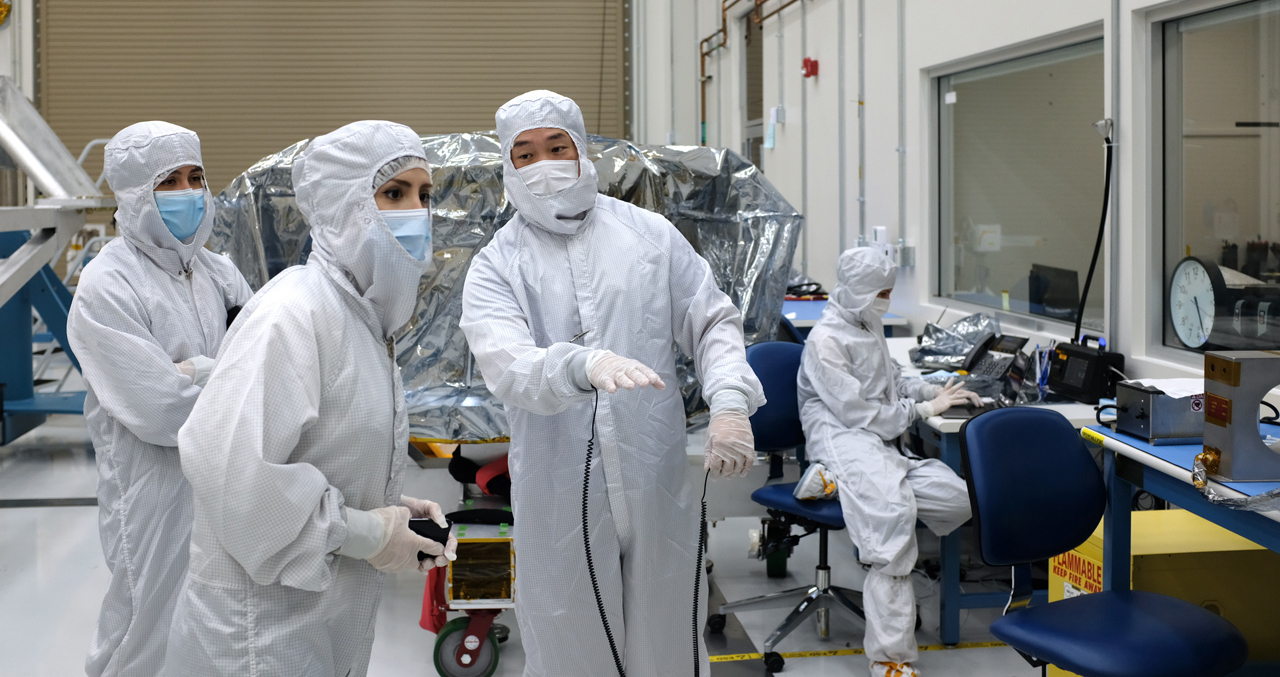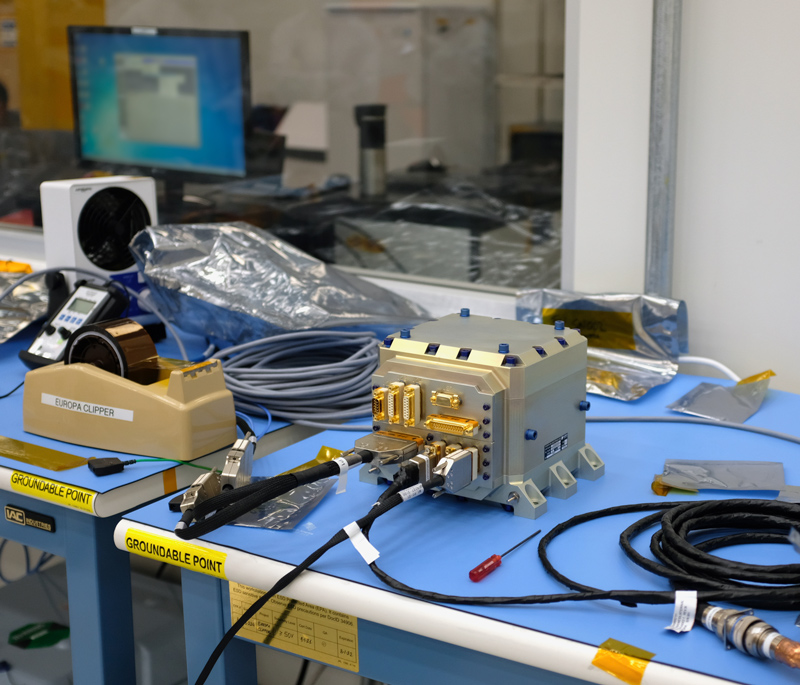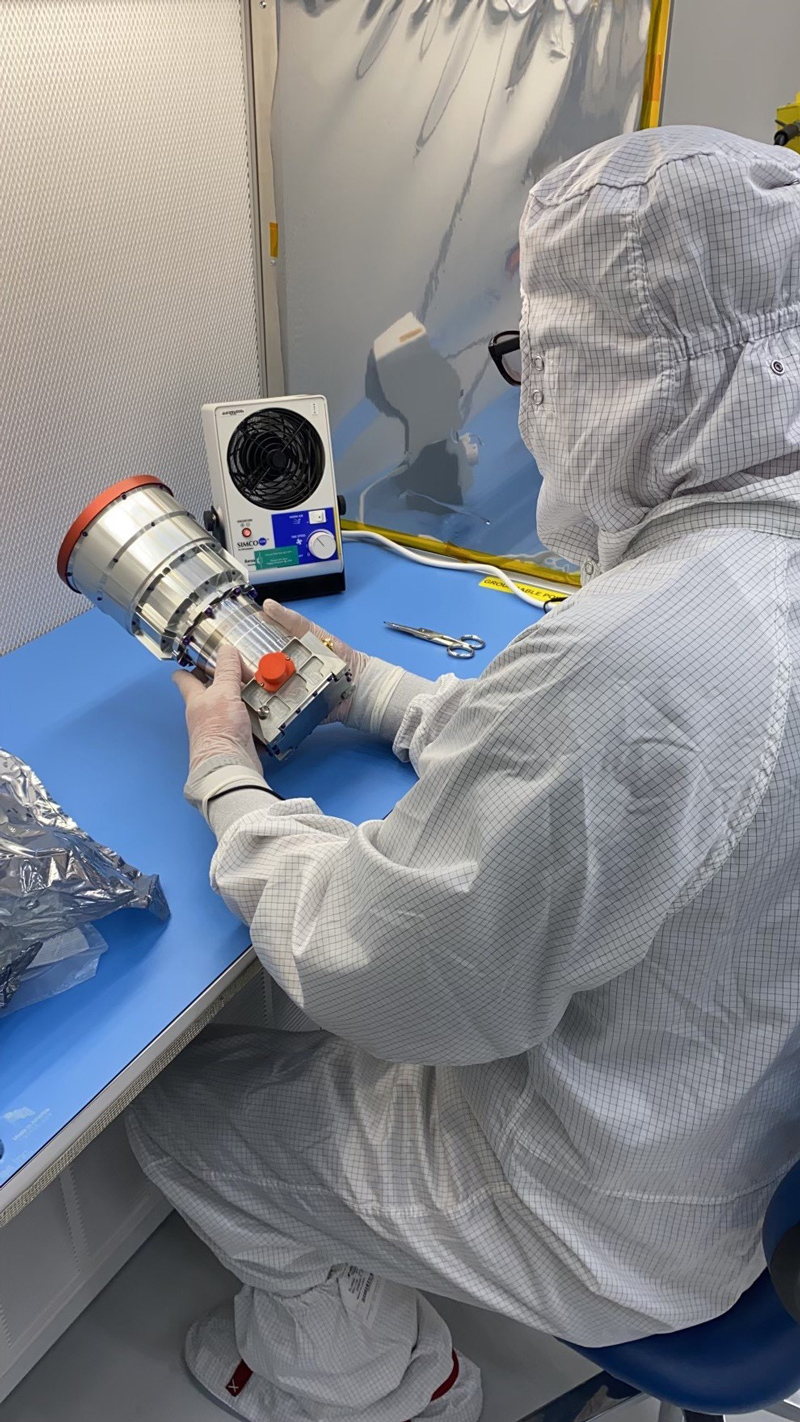Mission Updates | January 18, 2022
Mission Dispatch: Tracking the Stars

In a clean room at NASA’s Jet Propulsion Laboratory, Mana Salami, guidance and control (G&C) systems engineer (front left) and Herrick Chang, cognizant engineer (front right), discuss testing for Europa Clipper’s star tracker. At far left is G&C hardware engineer Gabrielle Massone. At far right sits quality assurance engineer Shaunessy Grant. Chang, Massone, Grant, and James Alexander (not pictured) escorted the hardware from the Sodern company in France to JPL. Credit: NASA/JPL-Caltech/J. Thompson
Europa Clipper will need to know its orientation while traveling from Earth to Jupiter and in orbit around Jupiter. This is critical for the spacecraft to orient the instruments for science observations, and to point its communications antennas to transmit data back to Earth.
To accomplish this, it will use the stars.
Technically called stellar reference units, Europa Clipper will use two “star trackers” to know how the spacecraft is rotationally oriented in space. Europa Clipper’s star tracker design was particularly challenging due to the intense Jovian radiation environment. This radiation consists of high-energy charged particles accelerated by Jupiter’s magnetic field. The particles create thousands of bright spots and streaks in star tracker images. To overcome that visual noise, engineers designed the star tracker to filter out the spots and streaks, enabling its computer to concentrate on the stars themselves.
“Without knowing the spacecraft’s exact orientation, it would be impossible to precisely point science instruments at Europa to collect data, or to accurately point the antenna toward Earth for communication,” said Mana Salami, a systems engineer at NASA’s Jet Propulsion Laboratory in Southern California.

Salami works in guidance and control for Europa Clipper. She and other engineers were in a JPL cleanroom on October 26, 2021, to test the star tracker, which had recently arrived from France.
The star tracker is the first piece of Europa Clipper flight hardware that Salami has seen in person after joining the mission more than eight years ago. “The moment I saw it, I realized even more that our spacecraft is becoming a reality,” Salami said. “It gave me goose bumps to be a few feet away from the star tracker and think about its role in ensuring the success of this daring mission.”
The star tracker views stars with a small camera, then matches them with the stars in its onboard catalog. Identifying three or more stars, along with the stars’ orientation in the star tracker’s field of view, provides the spacecraft with its three axes of orientation in space.
To test the star tracker, engineers showed the device two arrangements of simulated stars to make sure the optics worked and that the tracker communicated with the onboard computer. In another test, the engineers bypassed the optics and sent simulated star fields directly to the onboard computer to ensure it could identify any star field it was given.
In the cleanroom with Salami that day were Herrick Chang, cognizant engineer for the star tracker, guidance and control engineer Gabrielle Massone (the device’s contract technical manager), flight technician Jon Buckell, and Europa quality assurance engineer Shaunessy Grant.

For her part, Salami is grateful for being able to contribute directly to the mission’s future discoveries. “Europa Clipper’s science and engineering objectives are the main reason I joined the project, and I have never stopped being excited about it,” Salami said. “It is a dream come true to help humankind learn more about worlds beyond Earth that might host habitable environments.”
By Jay R. Thompson


